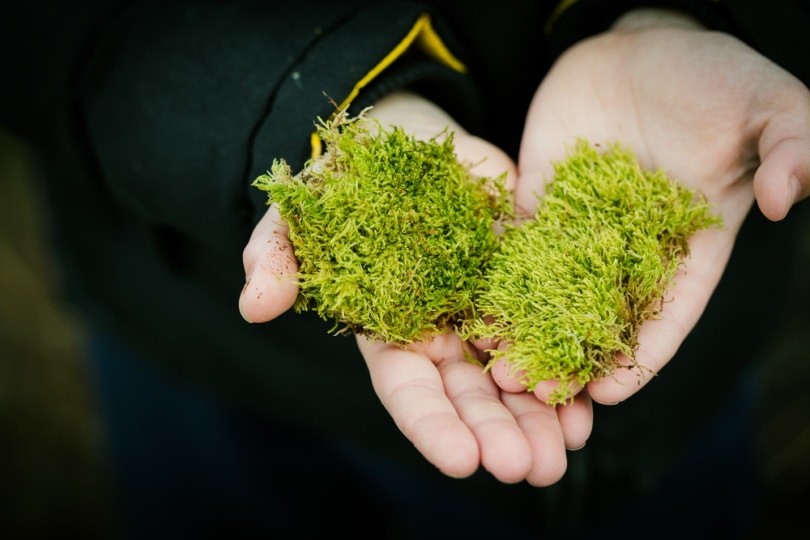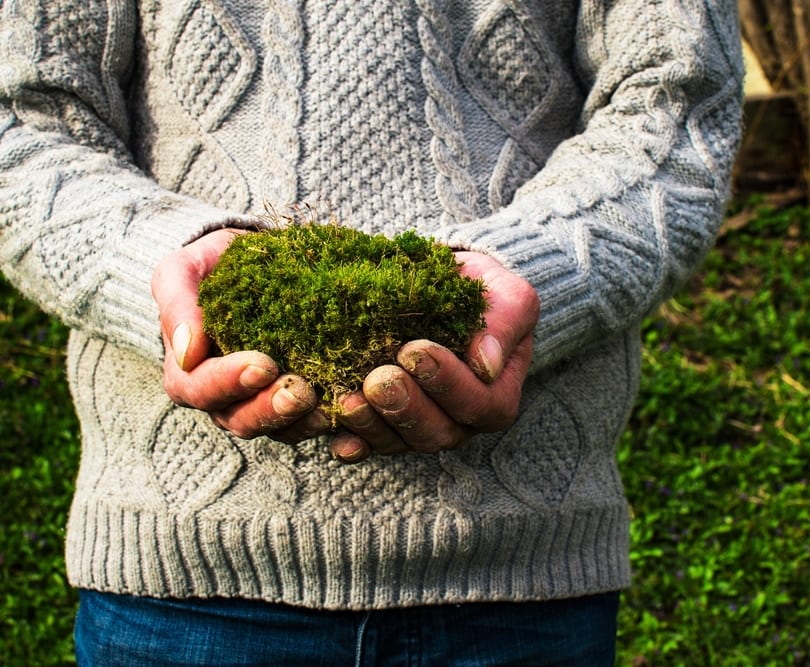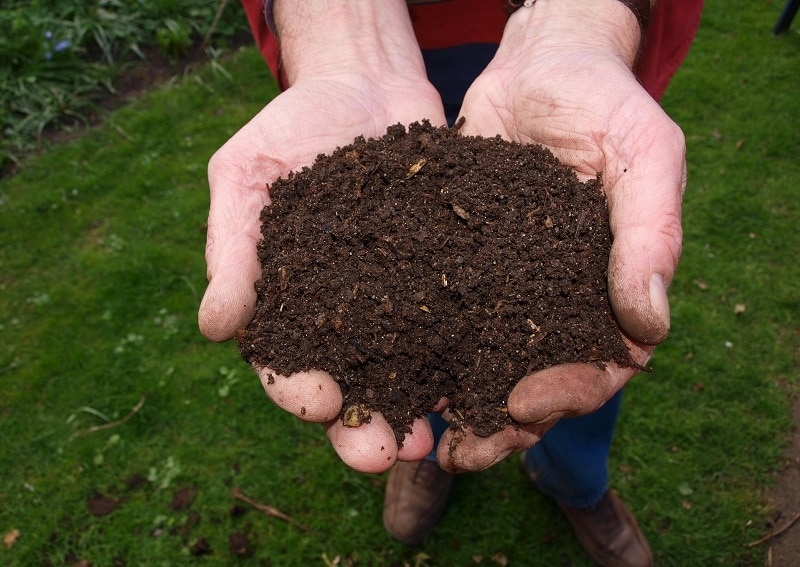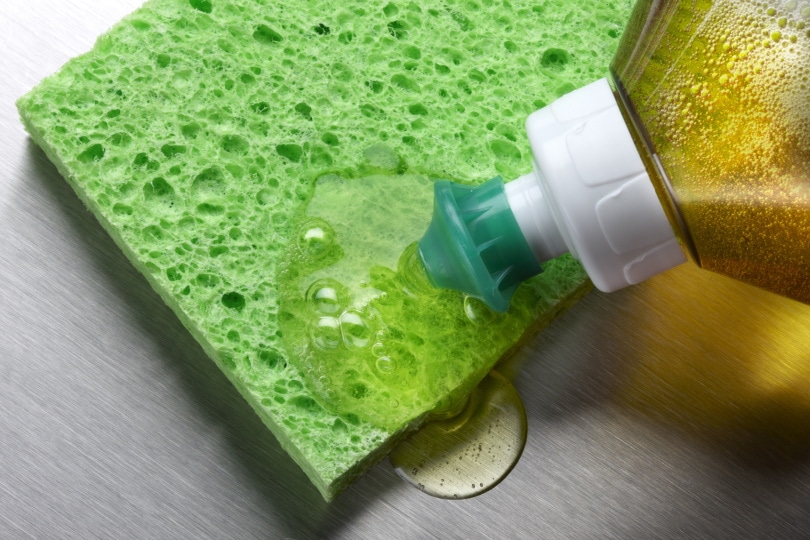How to Get Rid of Moss in Your Garden Beds: 6 Methods That Work
-
Kristin Hitchcock
- Last updated:

Moss enjoys growing anywhere shady, though some varieties are somewhat tolerant of sunlight. Once moss decides to grow somewhere, it can be hard to get rid of. Moss is pretty tolerant and hardy, so it often doesn’t go away without some effort.
Luckily, though, there are many ways to easily get rid of moss in your garden beds. While each of these methods isn’t necessarily suitable for every situation, you should find a least one method that will work for you.

The 6 Methods to Get Rid of Moss in Your Garden Beds
1. Remove It by Hand

Moss is extremely hardy. It has outlived the dinosaurs and doesn’t mind many of the usual chemicals we resort to when removing unwanted plants. Therefore, you can’t treat it like you would other weeds out there.
Because moss grows so slowly, you can often remove it by hand without too much of a problem. A hand rake is the best option, as it can remove the moss and its thin, small roots. Therefore, it works great for removing moss that has grown in your garden beds.
However, if you don’t have a hand rake, you can also use a fork. These work extremely well when removing moss, as they’re similar to a hand rake.
Because moss does not attach deep into the soil, you shouldn’t have to pull on the moss. Therefore, it is much easier to pull out than other unwanted plants. This should not be a hard gardening job.
2. Bury It
Moss needs access to sunlight to grow. Therefore, if you flip it over, it will stop growing and decay into the soil. Not only does this limit some of the work you have to do, but it also helps put some nutrients back into the soil.
However, do keep in mind that some species of moss won’t die when sunlight is taken away. Instead, they simply “go to sleep.” In these cases, it might be best to remove them, though you don’t necessarily have to. The moss may return with a passion later, though, if you churn it back up.
However, this will keep it from spreading. If you’re caring for your plants and notice some new moss growth, simply flip it over.
3. Add Compost (Or Fertilizer)

Typically, a healthy garden bed should not have tons of moss growing. Moss usually grows in soil that is low in nutrients and difficult for other plants to grow in. Therefore, if moss is plentiful in your garden, it may be a sign that you need to add compost or fertilizer.
Moss prefers an acidic soil of 5.0 to 5.5 for maximum growth. However, veggie gardens prefer a pH range that is above 5.8. Therefore, if there is a lot of moss, the soil likely isn’t the best pH for your plants. (With some rare exceptions; some garden plants do prefer a pH balance closer to 5.0).
Luckily, there are many ways you can fix this. Often, you can add compost to fix the pH balance of the soil. This is by far the easiest and most efficient way. However, you can also add Epsom salts, baking soda, or other ingredients. These can easily be overdone, though, so compost is often the way to go.
The ideal soil/compost ratio varies depending on the plant. However, it is often best to have around 20% compost in your garden beds. You want to mix this in before you plant your seeds, preferably. However, you can also add it afterward if you notice moss growth. You should never add more than 30%, as your soil may stop holding water if you add too much.
4. Pruning
You should also keep your plants pruned back as appropriate. Too much shade on the garden beds will encourage moss growth. If you can, keep your plants trimmed and growing upwards—not outwards. Of course, this isn’t possible with all plants. Some of them are simply made to grow outwards.
Not only is moss a sign that there isn’t any sunlight hitting the garden beds, but it is also a sign that the soil may stay too moist for too long. Of course, this is partly because there is no sunlight on the garden beds. It could also be a sign of overwatering or a messed-up soil ratio. Some plants like it wet, but many will develop root rot if kept in the same conditions that moss likes to grow.
You shouldn’t only be focused on getting rid of the moss. You should also be focusing on getting out soil correct to encourage your plants to grow.
5. Dish Soap

Dish soap is toxic to moss when sprayed on it. It will prevent sunlight from reaching the moss, which will put the moss to sleep. Of course, this will not kill the moss-like it will other plants. You will also need to avoid spraying your plant with the mixture, as most plants cannot live with dish soap on their leaves for long.
Luckily, this isn’t always a huge problem, though. In many cases, you can wash off your plant’s leaves right after spraying and leave the moss drenched.
It works best if you do this in the morning, as you want the dish soap to dry quickly. To make the application easier, add dish soap to a water bottle with a decent amount of water. You’ll find all sorts of ratios on the internet. However, you don’t have to be very picky about measurements.
6. Vinegar
You can utilize vinegar for just about anything. It will kill nearly-grown moss right away, though mature moss can often withstand these chemicals. Concentrated vinegar will sometimes work on mature moss, but this is often extra work that doesn’t need to be done when you consider the other options we’ve listed.
If it is going to work, the vinegar should kill the moss in 10 minutes. After that, you should remove the moss from the bed. You don’t want the vinegar to seep into the soil, as it may harm your plant.
Because vinegar is toxic to most plants, this is one of our least suggested methods. However, if the garden bed is currently empty, this can be a suitable option.

In Conclusion
There are many ways to kill moss. However, the easiest way is often simply to pull it out. Moss does not grow proper roots, so removing it is often easy. You can simply rake the whole top of the bed to turn over moss and prevent it from spreading. Without sunlight, moss will hibernate and stop growing. While it doesn’t die, you won’t have to worry about it in these cases anymore.
However, moss is usually a sign that something isn’t right in your garden bed. Therefore, you may need to look at a deeper problem. The soil may be too acidic, for instance. It may also be too moist, or your plants may be overgrown. For this reason, we highly recommend taking a complete look at your garden if moss seems to be plentiful.
Related Read:
- The 9 Easy Methods To Kill Moss on Concrete, Bricks, and Pavers
- Does Moss Have Roots? What You Need To Know!
Featured Image Credit: Tommy Lee Walker, Shutterstock
Contents